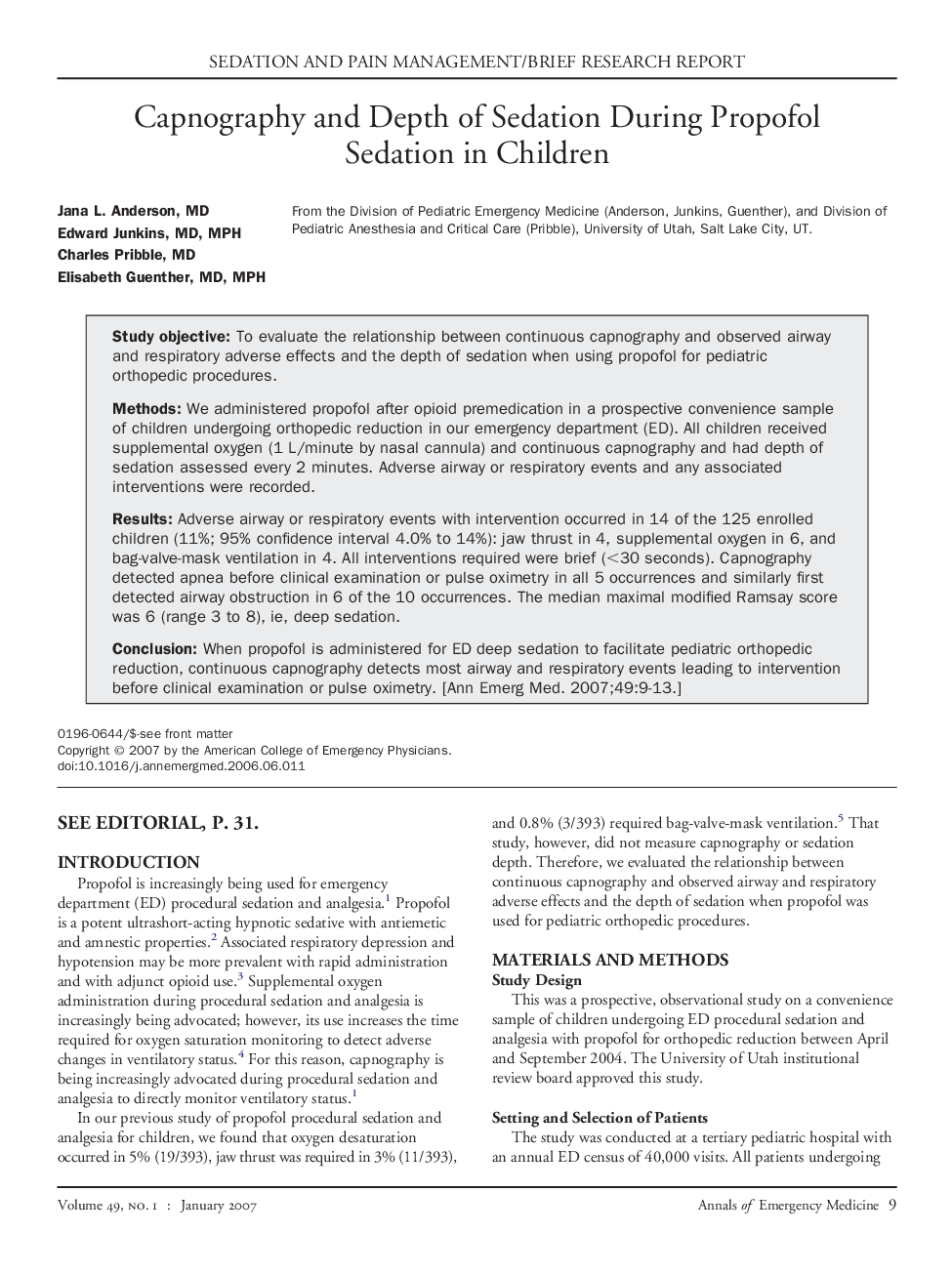| Article ID | Journal | Published Year | Pages | File Type |
|---|---|---|---|---|
| 3234194 | Annals of Emergency Medicine | 2007 | 5 Pages |
Study objectiveTo evaluate the relationship between continuous capnography and observed airway and respiratory adverse effects and the depth of sedation when using propofol for pediatric orthopedic procedures.MethodsWe administered propofol after opioid premedication in a prospective convenience sample of children undergoing orthopedic reduction in our emergency department (ED). All children received supplemental oxygen (1 L/minute by nasal cannula) and continuous capnography and had depth of sedation assessed every 2 minutes. Adverse airway or respiratory events and any associated interventions were recorded.ResultsAdverse airway or respiratory events with intervention occurred in 14 of the 125 enrolled children (11%; 95% confidence interval 4.0% to 14%): jaw thrust in 4, supplemental oxygen in 6, and bag-valve-mask ventilation in 4. All interventions required were brief (<30 seconds). Capnography detected apnea before clinical examination or pulse oximetry in all 5 occurrences and similarly first detected airway obstruction in 6 of the 10 occurrences. The median maximal modified Ramsay score was 6 (range 3 to 8), ie, deep sedation.ConclusionWhen propofol is administered for ED deep sedation to facilitate pediatric orthopedic reduction, continuous capnography detects most airway and respiratory events leading to intervention before clinical examination or pulse oximetry.
